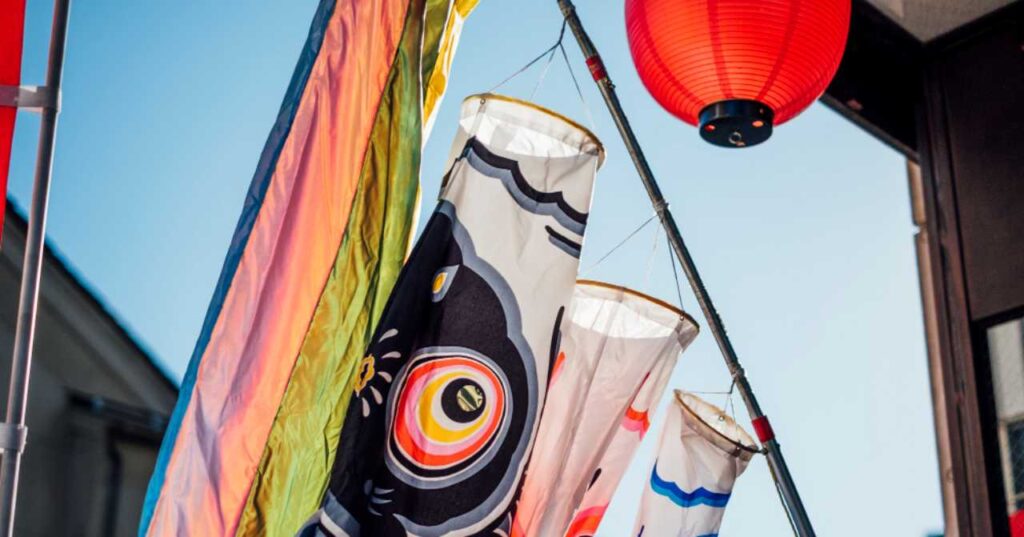For Japanophiles (a.k.a “lovers of everything related to Japanese culture and its people”), one of the must-sees on your bucket list when visiting the country is a traditional festival or “matsuri”. These festivals, as one would imagine, are among the most colorful and exciting events you can find in Japan. They are also an excellent way to experience Japan’s history, culture and traditions first-hand.
And so with that, let us explore the 10 must-see local festivals when visiting Japan! Keep on reading and be amazed by Japan’s vibrant, colorful and exciting traditional festivals!
Contents
- Japan Traditional Festivals
- 1. Gozan no Okuribi (Kyoto)
- 2. Koenji Awa Odori (Tokyo)
- 3. Aomori Nebuta Festival (Aomori Prefecture)
- 4. Tori no Ichi at Kotohira Otori Shrine (Yokohama)
- 5. Hakata Gion Yamakasa (Fukuoka)
- 6. Chichibu Night Festival (Saitama Prefecture)
- 7. Takayama Festival (Gifu Prefecture)
- 8. Nagasaki Lantern Festival (Nagasaki Prefecture)
- 9. Okinawa Zento Eisa Matsuri (Okinawa)
- 10. Kishiwada Danjiri Festival (Osaka)
- Final Thoughts
Japan Traditional Festivals
Over 200,000 festivals are held in Japan each year. Many of these are visited by foreign visitors, such as those in Kyoto’s Gozan no Okuribi and Aomori Nebuta Festival. In addition, the Chichibu Night Festival takes place in Saitama and the Takayama Festival in Gifu.
If you’re looking for something a bit different to do while you’re in Japan, head over to the Okinawa Zento Eisa Matsuri and Tokyo Koenji Awa Odori. In Yokohama, you can also check out the stalls at the Tori no Ichi festival. There are plenty of other festivals happening all across the country. Here are the 10 must-sees for your ultimate Japan visit experience!
1. Gozan no Okuribi (Kyoto)
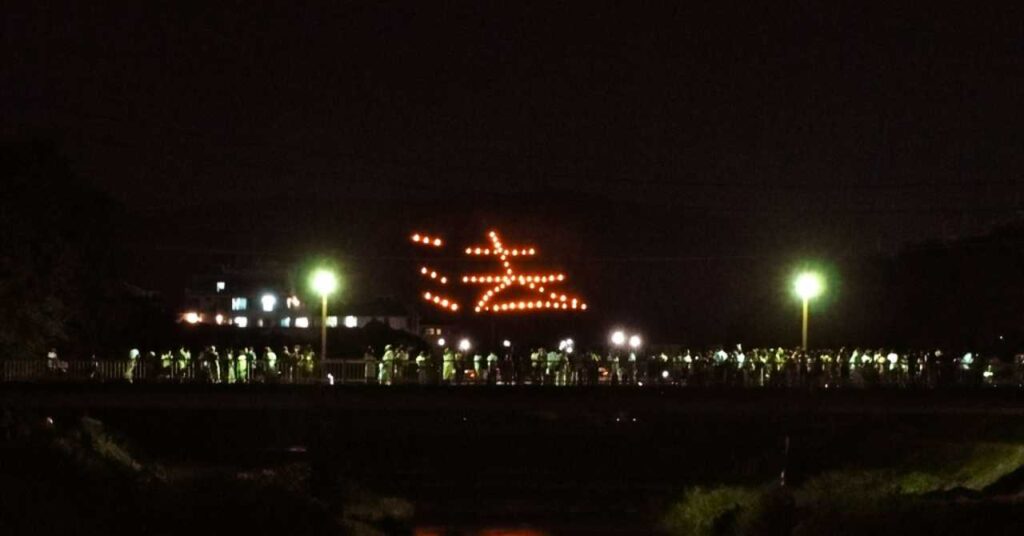
Location: Kyoto Station, Higashishiokoji Kamadonocho, Shimogyo Ward, Kyoto, Japan
Timings: 16 August from 8 pm to 8.50 pm
Gozan no Okuribi is a traditional Buddhist event that sends off the spirits of the deceased during Bon Festival. One of Kyoto’s four major events, it happens every August 16. Five fires, each burning for about 30 minutes, are lit sending off the spirits of ancestors and praying for a healthy long life for the living. You can find many viewpoints overlooking the send-off fires throughout the city of Kyoto. If you want to see all five, your best bet is a hotel room with a view.
What to expect: There are five fires, each burning for 30 minutes. They will be lit off in a specific order and you should find out what this order is before you go. The first one starts at 8 pm, with the last one ending at 8:50 pm.
2. Koenji Awa Odori (Tokyo)
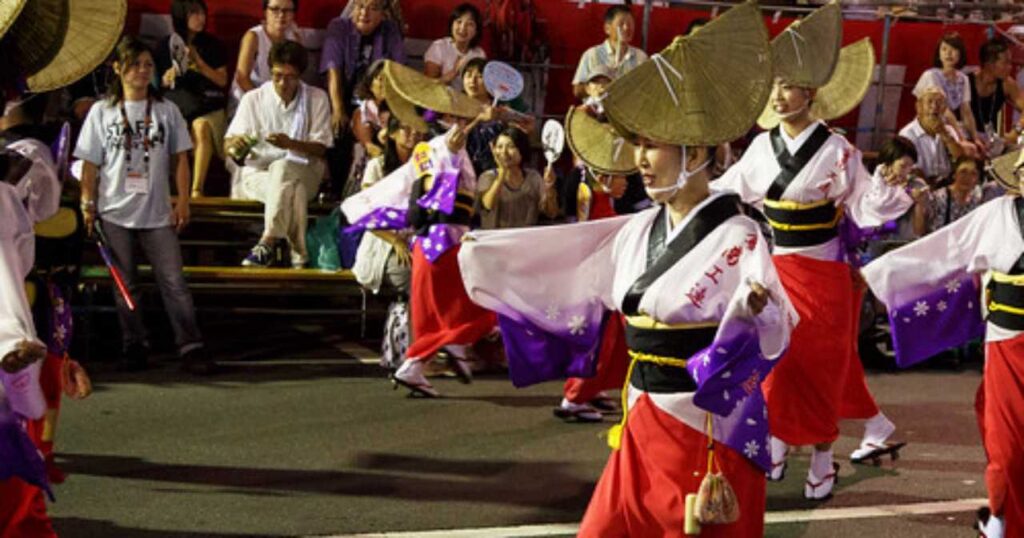
Location: JR Kōenji Station: 4-chome Koenjiminami, Suginami Ward, Tokyo, Japan
Timings: Last Saturday and Sunday of August
Koenji Awa Odori is a summer festival celebrating Japan’s traditional folk dance, Awa. It has been taking place since the Kamakura period (1192–1333) and continues today on August 15th-16th in Koenji, Tokyo. The festival involves over ten thousand dancers performing traditional dances with instruments including taiko drums, shamisen lutes and flutes. The female dancers wear yukata (light cotton kimonos) while the male dancers wear happi coats.
What to expect: There will be a large number of people attending the festival, so come prepared with water and sun protection. The food on sale at the festival is also delicious and reasonably priced.
3. Aomori Nebuta Festival (Aomori Prefecture)
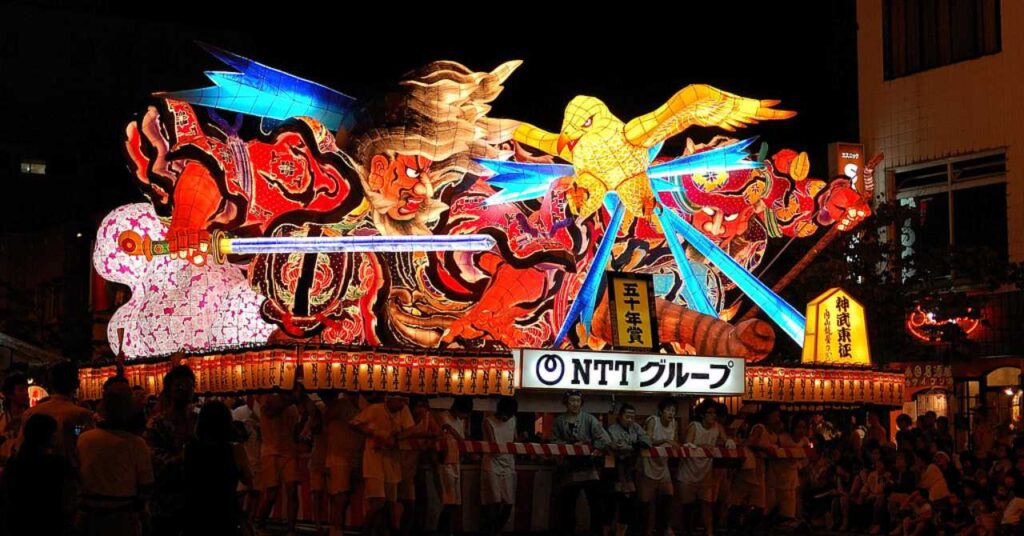
Location: Area around JR Aomori Station, Yanakawa, Aomori, 038-0012, Japan
Timings: 2–7 August
One of the most popular festivals in Tohoku is the Aomori Nebuta Festival, which features vibrant warrior-shaped lanterns. The event started when the organizers released lanterns into the ocean to wash away sins during the Star Festival. After the Meiji period, the size of the floats became larger. It usually takes around three months for a team of 300 individuals to build a float.
During the festival, children’s nebuta and large nebuta parade around the Aomori Station. The spectators can enjoy the event by looking at the dynamic floats or participating in a haneto dance. On the last day of the festival, thousands of fireworks are displayed along the sea. Six of the winning floats will participate in the sea parade.
What to expect: The Aomori Nebuta Matsuri is a large and colorful event. The floats are decorated with glittering lights, which makes them look really impressive. The festival also includes music performances, fireworks and various competitions between teams.
4. Tori no Ichi at Kotohira Otori Shrine (Yokohama)
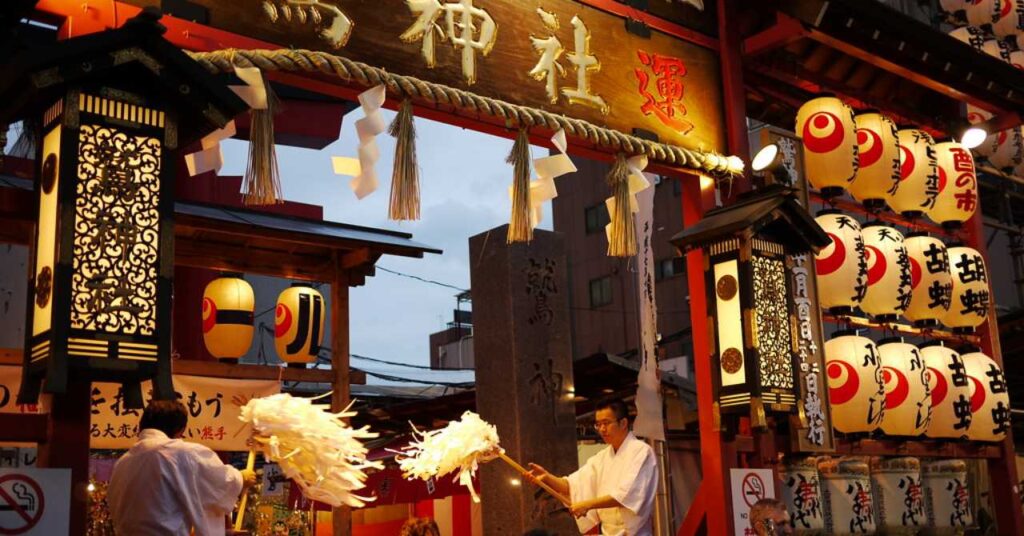
Location: Kotohira Otori Shrine, 1-3 Maganecho, Minami Ward, Yokohama, Kanagawa 232-0021, Japan
The annual event known as “Tori no Ichi” is held at the Otori Shrine in Yokohama. It is held each year and features hundreds of lanterns displayed on the shrine’s premises. The surrounding areas are lined with stalls selling bamboo rakes and other lucky items.
The festival mood can be enjoyed by playing various games, such as target shooting and goldfish scooping. You can also enjoy Japanese street food, such as octopus balls and deep-fried yams with seaweed.
What to expect: The event is held every year on November 1st and attracts crowds of people. The shrine is located in Yokohama’s Minami Ward, about a 10-minute walk from Sakuragicho Station.
5. Hakata Gion Yamakasa (Fukuoka)
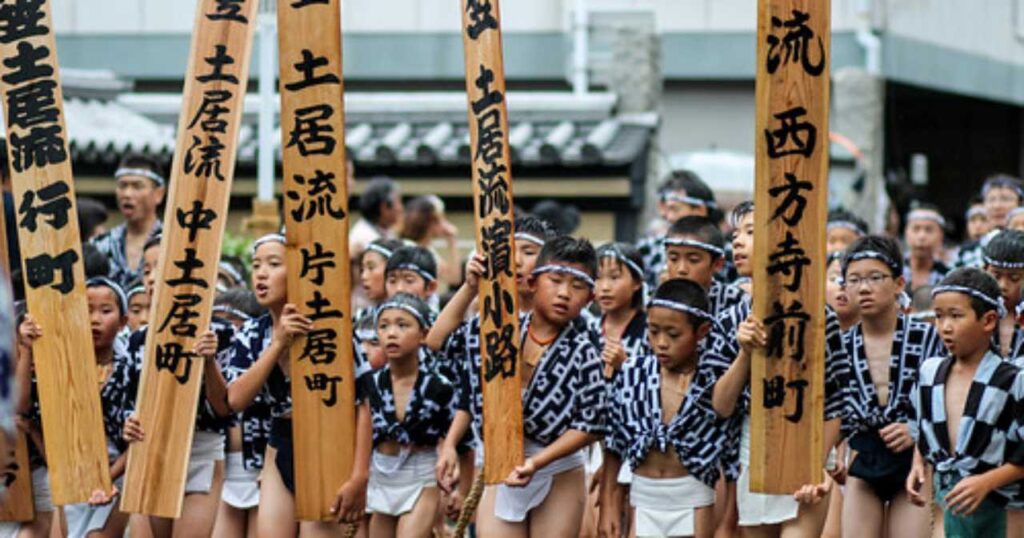
Location: Kushida Shrine, 1-41 Kamikawabatamachi, Hakata Ward, Fukuoka 812-0026, Japan
Timings: 1–15 July
One of the highlights of the festival is the Oiyama event, which involves men racing each other while carrying a massive float. This event is a part of the Hakata Gionkasa festival, which is held at the Kushida Shrine in Fukuoka.
The city of Hakata is known for its vibrant festival atmosphere. During the festival period, which begins on July 1, you can see 14 yamakasa in various areas. If you want to catch a glimpse of the floats, you can catch the Oiyamanarashi, Shudan-yamamise, and Oiyama races on July 12 and 15.
What to expect: The festival is a colorful and festive affair, with thousands of people walking around wearing yukata (cotton kimono) and traditional Japanese headgear. There will be stalls selling food and drinks on the streets, as well as performances that are held at various locations in the city.
6. Chichibu Night Festival (Saitama Prefecture)
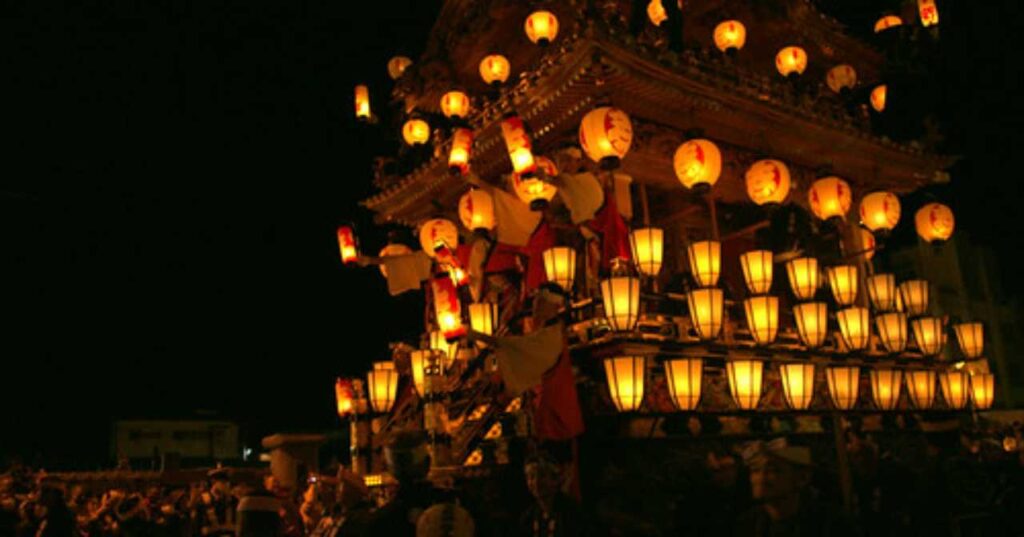
Location: Chichibu Shrine, 1-3 Banbamachi, Chichibu, Saitama 368-0041, Japan
Open: 2–3 December
The Chichibu Night Festival is a traditional event that takes place every December at the Chichibu Shrine, which was registered as a UNESCO Intangible Cultural Heritage in 2016. It’s held every year for over 300 years and features four floats and two Yasaboko floats. The floats are paraded through the streets accompanied by the sounds of taiko drums, bells, and flute.
The 6 floats, which are known as dashi, are adorned with gold ornaments and carvings, and they are also referred to as moving gates. During the day, you can watch a kabuki performance inside the shrine. Thousands of fireworks are launched at night as the lanterns are lit.
What to expect: The parade features four floats and two Yasaboko floats. You can watch a kabuki performance inside the shrine or enjoy fireworks at night.
7. Takayama Festival (Gifu Prefecture)
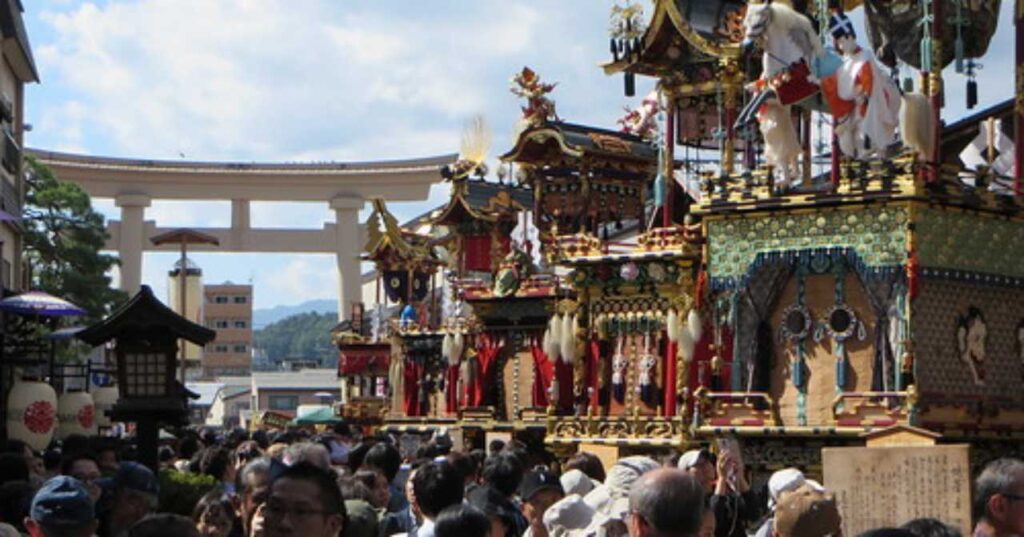
Location: Takayama, Gifu 506-0822, Japan
Open: 14–14 April and 9–10 October
One of Japan’s most beautiful festivals is the annual event known as the Takayama Festival in the city of Ginu. It features two festivals in autumn and spring. The Sanno Festival is a great opportunity to enjoy the full bloom of cherry blossoms. On the other hand, the Hachiman Festival features a parade of floats.
The event features a parade that showcases hundreds of individuals dressed in traditional attire, such as hakama, which are Japanese trousers or flat straw hats, and karakuri, which are puppet shows. The procession also passes through the streets of the city, which are lined with buildings that date back to the Edo period.
What to expect: The Hachiman Festival welcomes visitors to experience the culture of Japan. There are many attractions that you can check out, including street vendors and food stalls that sell traditional Japanese cuisine such as Takoyaki, Okonomiyaki, and Sake. You can also buy souvenirs from the various shops that line the streets.
8. Nagasaki Lantern Festival (Nagasaki Prefecture)
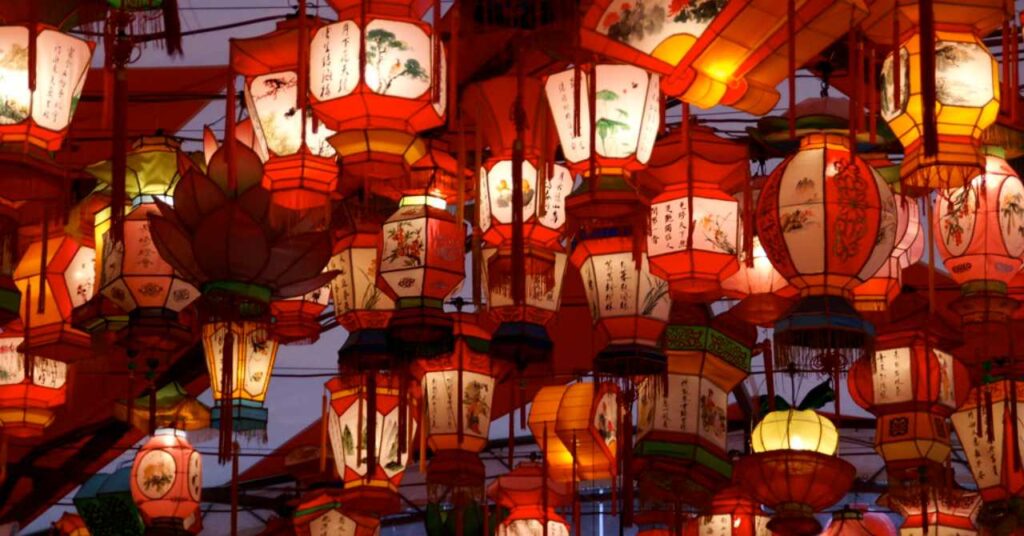
Location: Nagasaki Shinchi Chinatown, 10-13 Shinchimachi, Nagasaki, 850-0842, Japan
During the winter season, the city of Nagasaki hosts a lantern festival, where thousands of colorful Chinese lanterns are displayed. Some of the highlights of the event include large lanterns that are shaped like animals and dragons.
You can enjoy various events in China, such as dragon and lion dances, erhu exhibitions, and Chinese acrobatics. Some of the most popular places to visit as a couple are the Doza River and Nagasaki Love Lantern. You can also pray for love at the Confucian shrine in Nagasaki.
What to expect: You can expect a lot of people during the lantern festival. So, it’s best to visit in the early evening or at night. You should also be prepared for cold weather because winter is the best time to see snowflakes falling from the sky.
9. Okinawa Zento Eisa Matsuri (Okinawa)
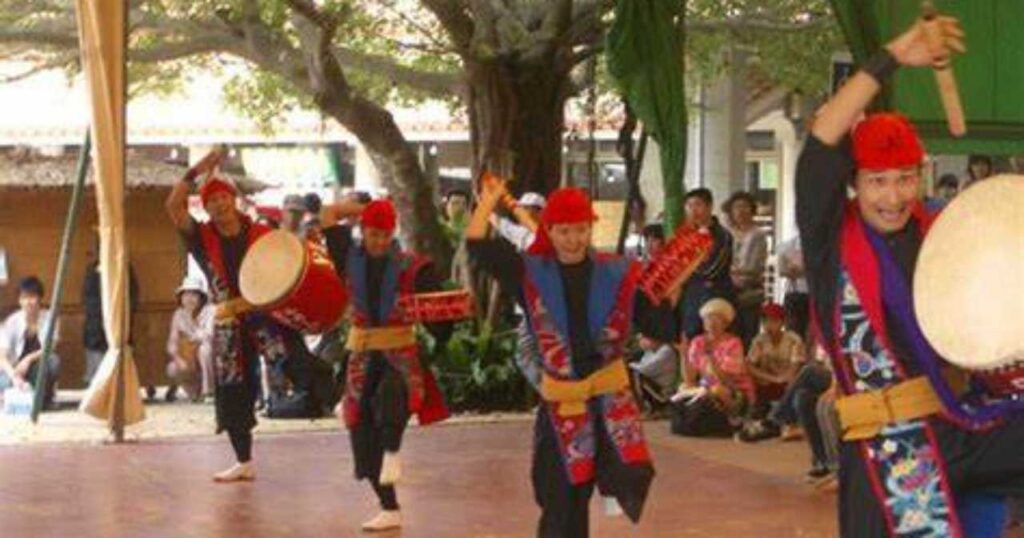
Location: Koza Sports Park, 2-1-1 Moromizato, Okinawa 904-0032, Japan
The Eisa Matsuri is a part of the Bon Festival, which is held in the city of Okinawa. This event features a variety of activities and events, such as traditional dance. Eisa is performed to the sounds of large drums and small, high-pitched instruments.
The festival begins on the first day with the Michi-Junee dance parade, a city-wide event. The second and third days feature Eisa performances by local youth groups and organizations. The festival concludes with fireworks and a laser show.
What to expect: The Eisa Matsuri is a fantastic way to experience the culture of Okinawa. The dances and music are colorful and exciting, with large crowds cheering on the performers. There will be plenty of food vendors selling traditional Okinawan cuisine, such as dried squid snacks, boiled sweet potatoes and octopus balls.
10. Kishiwada Danjiri Festival (Osaka)
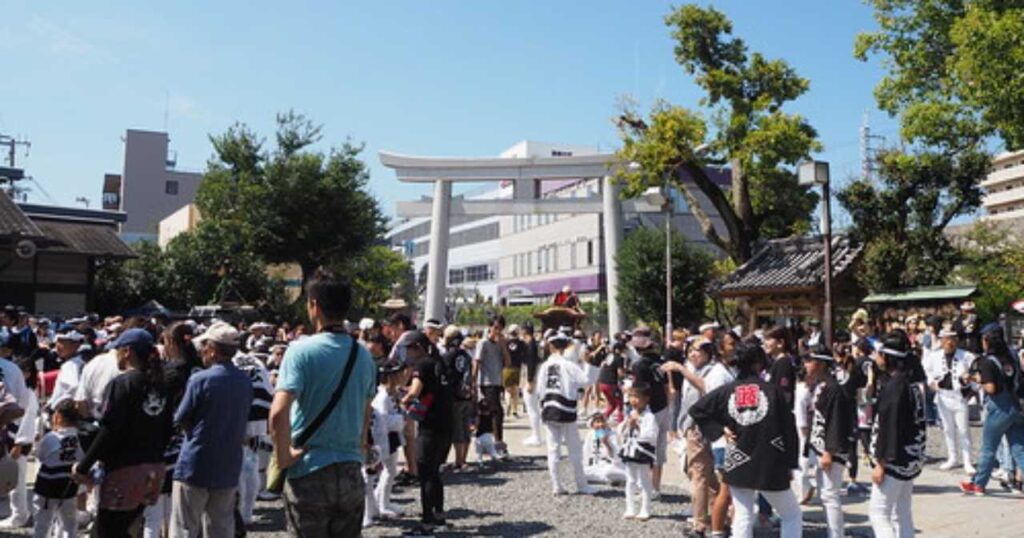
Location: Kishiwada, Osaka, 96-8510 Japan
Timings: 9–10 September
The first thing you’ll notice about the festival is the enormous wooden cart known as a danjiri speeding around the corners at full speed. The event’s vibrant colors and harmonious atmosphere result from the community spirit displayed in each of the participating towns.
The characters who ride the carts are known as Daiku-gata, and they are the stars of the festival. The mae-teko, who is on the left and right, and the ushiro-teko, who is on the rear, have a lot of skills and are responsible for steering the carts. The individuals who pull the carts are dressed in various clothing, such as a twisted stomach band, a happi coat, and close-fitting trousers.
The upbeat chants of “Sorya, sorya!” can be heard throughout the city. During the parade, you can also see carvings of mythological and war stories on the danjiri carts. These are incredibly beautiful and make for great close-ups.
What to expect: The Danjiri Festival is a very lively and colorful festival that you shouldn’t miss. The best place to view the parade is from the Tawaraya garden, which is located in front of the station. There are many stalls selling yakisoba (fried noodles), other snacks, and souvenirs.
Final Thoughts
Traditional festivals in Japan are numerous and widely appreciated, so if you plan on visiting here anytime soon, you should definitely try to catch a few of them. Japan’s festivals are also well-known for their incredible beauty, so you can be sure that the time you spend there will be truly unforgettable.
READ NEXT: Summer in Japan: How to Beat the Dreaded Summer Heat
